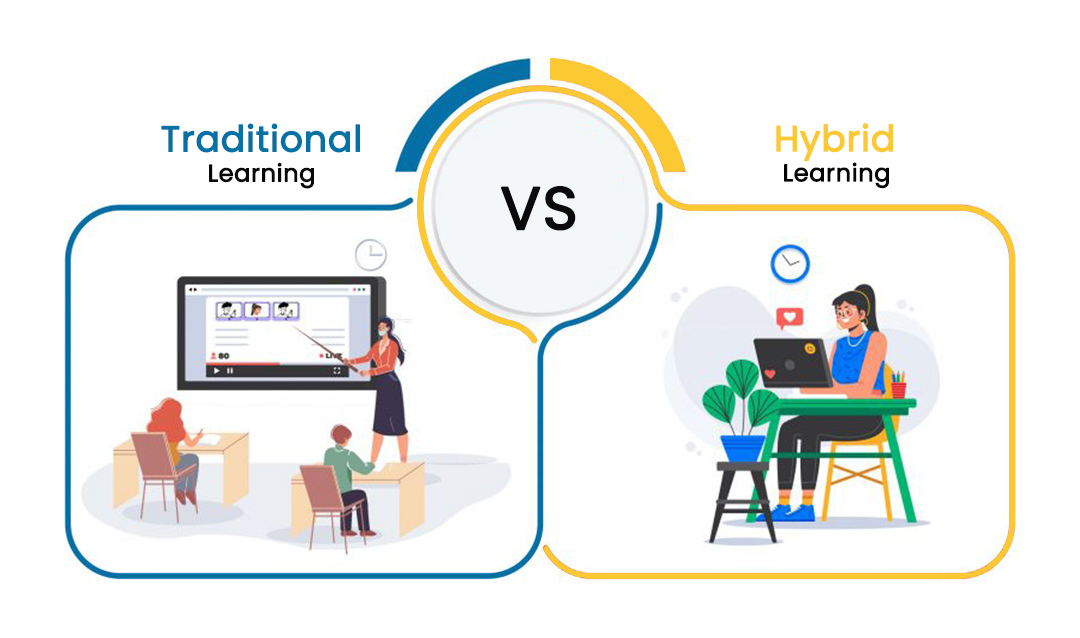E-Learning vs Traditional Learning: Pros and Cons
E-Learning vs Traditional Learning: Compare the pros and cons of modern e-learning and traditional education methods in this insightful guide.
Introduction
E-Learning and traditional learning are two prominent approaches to education, each with unique advantages and challenges. The rise of technology has revolutionized the way we access education, leading to a debate: which method is better? In this blog, we will compare e-learning vs traditional learning, exploring their pros and cons to help you make an informed decision.

What is E-Learning?
E-learning refers to the delivery of education through digital platforms, allowing students to access content anytime, anywhere. This method leverages the internet, multimedia tools, and interactive platforms to make learning engaging and flexible.
What is Traditional Learning?
Traditional learning takes place in a physical classroom, with face-to-face interaction between students and teachers. It often follows a rigid timetable and a set curriculum. Students typically attend school or university for a set number of hours each day, engaging in discussions, group work, and hands-on activities. The approach fosters real-time collaboration and mentorship, and is the educational model that has been in place for centuries.

Pros of E-Learning
- Flexibility and Convenience
E-learning allows students to learn at their own pace and schedule. This flexibility makes it ideal for people juggling work and study commitments. - Global Accessibility
Students from different parts of the world can access courses, which breaks down geographical and socio-economic barriers. - Cost-Effective
E-learning can reduce costs related to commuting, textbooks, and physical classroom facilities. - Diverse Learning Materials
Through multimedia tools such as videos, quizzes, and interactive elements, e-learning can engage students in creative ways, making learning more dynamic.
Cons of E-Learning
- Limited Social Interaction
E-learning lacks the face-to-face interaction that can help build communication skills and relationships with peers and instructors. - Dependency on Technology
E-learning relies heavily on stable internet access and devices, which may not be available to everyone. - Self-Discipline Required
The absence of in-person supervision means that students must be more disciplined and motivated to manage their own time and learning progress.
Pros of Traditional Learning
- Personal Interaction
Traditional learning allows students to interact directly with their peers and instructors, fostering better communication and teamwork skills. - Structured Environment
Fixed schedules and deadlines help students stay focused and manage their time more effectively. - Hands-On Learning Opportunities
In a traditional classroom, students often have more opportunities for practical, hands-on learning, which can be crucial in fields such as medicine, engineering, or art.
Cons of Traditional Learning
- Less Flexibility
Students must adhere to fixed schedules, which can be difficult for those with other commitments, such as work or family. - Higher Costs
Traditional learning may involve costs like commuting, accommodation, and campus fees, which can add up quickly. - Geographical Limitations
Not everyone has access to quality educational institutions nearby, which can limit learning opportunities for some students.
E-Learning vs Traditional Learning: Which is Better?
Choosing the right approach depends on individual needs and learning preferences. E-learning is perfect for those who need flexibility, cost-efficiency, and the ability to learn from anywhere. On the other hand, traditional learning offers a more structured environment and personal interaction, which may be better suited for those who thrive on direct engagement. Both methods have their strengths, and it’s important to weigh the benefits of each before making a decision.

Conclusion
E-learning and traditional learning each offer unique benefits and challenges. While e-learning provides flexibility and accessibility, traditional learning fosters interaction and a more structured approach. Understanding these differences can help you choose the method that best fits your learning style and goals. Whether you’re seeking a more independent study environment or prefer the social aspects of traditional classroom settings, both options contribute to shaping the future of education.
Meta Description
E-Learning vs Traditional Learning: Compare the pros and cons of modern e-learning and traditional education methods in this insightful guide.



